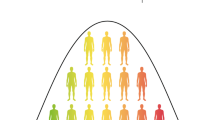Abstract
The rationale for the use of an endophenotype in genetic studies of psychiatric disorders is that these disorders are likely to be multi-determined, with multiple environmental and genetic origins, so that a discrete biological phenotype is more likely to reflect a single major gene effect. This strategy has been used successfully in the linkage and segregation analysis of several illnesses, including hemochromatosis, for which elevated serum iron was used as the relevant endophenotype, and colon cancer, for which elevated numbers of polyps were used as the phenotype. For psychiatric illnesses, various phenotypic approaches have been suggested. These include the use of variants within the illness, such as differences in age of onset, which may reflect differences in disease (see Chapter 6) and the use of personality characteristics as indicators of underlying biological differences. Physiological mechanisms, the focus of this chapter, are favored because of their presumed relationship to synaptic neurotransmission, a basic unit of function in the central nervous system. This chapter describes three examples of physiological endophenotypes that have been used successfully in linkage analysis, and discusses general issues in their use and the interpretation of results.
Access this chapter
Tax calculation will be finalised at checkout
Purchases are for personal use only
Similar content being viewed by others
References
Holzman P.S., Kringlen E., Levy D.L., and Haberman S.J. (1980) Deviant eye tracking in twins discordant for psychosis. A replication. Arch. Gen. Psychiatry 37, 627–631.
Holzman P.S., Kringlen E., Matthysse S., Flanagan S.D., Lipton R.B., Cramer G., et al. (1988) A single dominant gene can account for eye tracking dysfunctions and schizophrenia in offspring of discordant twins. Arch. Gen. Psychiatry 45, 641–647.
Arolt V., Lencer R., Nolte A., Muller-Myhsok B., Purmann S., Schurmann M., et al. (1996) Eye tracking dysfunction is a putative phenotypic susceptibility marker of schizophrenia and maps to a locus on chromosome 6p in families with multiple occurrence of the disease. Am. J. Med. Genetics 67, 564–579.
Williams J.T., Begleiter H., Porjesz B., Edenberg, H.J., Foroud, T., Reich T., et al. (1999) Joint multipoint linkage analysis of multivariate qualitative and quantitative traits. II. Alcoholism and eventrelated potentials. Am. J. Hum. Genetics 65, 1148–1160.
Almasy L., Porjesz B., Blangero J., Chorlian D.B., O’Connor S.J., Kuperman S., et al. (1998) Quantitative trait loci analysis of human event-related brain potentials: P3 voltage. Electroencephalogr. Clin. Neurophysiol. 108, 244–250.
Freedman R., Coon H., Myles-Worsley M., Orr-Urtreger A., Olincy A., Davis A., et al. (1997) Linkage of a neurophysiological deficit in schizophrenia to a chromosome 15 locus. Proc. Natl. Acad. Sci. USA 94, 587–592.
Logel J., Gault J., Vianzon R., Hopkins J., Short M., Robinson M., et al. (2000) Mutation screen of the promoter region of the human a7 neuronal nicotinic receptor subunit in normal and schizophrenic individuals. Soc. Neurosci. Abstr. 26, 137.17.
Stober G., Saar K., and Ruschendorf F. (2000) Splitting schizophrenia: periodic catatonia-susceptibility locus on chromosome 15q15. Am. J. Hum. Genet. 67, 1201–1207.
Turecki G., Grof P., Grof E., et al. (2000) A genome scan using a pharmacogenetic approach indicates a susceptibility locus for bipolar disorder on 15q14. Biol. Psychiatry 47, 69S–70S.
Author information
Authors and Affiliations
Editor information
Editors and Affiliations
Rights and permissions
Copyright information
© 2003 Humana Press Inc.
About this protocol
Cite this protocol
Freedman, R. (2003). Electrophysiological Phenotypes. In: Leboyer, M., Bellivier, F. (eds) Psychiatric Genetics. Methods in Molecular Medicine™, vol 77. Humana Press. https://doi.org/10.1385/1-59259-348-8:215
Download citation
DOI: https://doi.org/10.1385/1-59259-348-8:215
Publisher Name: Humana Press
Print ISBN: 978-1-58829-037-3
Online ISBN: 978-1-59259-348-4
eBook Packages: Springer Protocols




